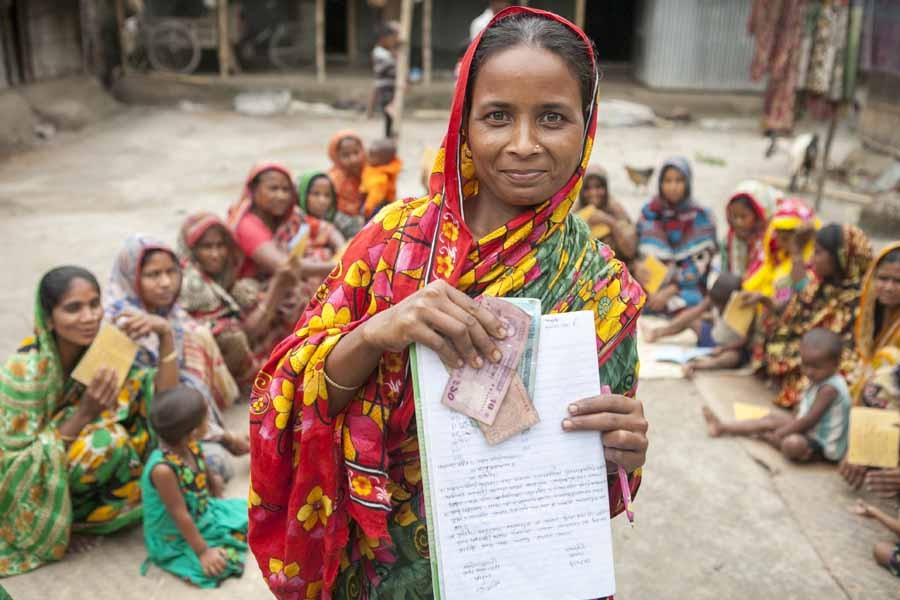The government and the World Bank (WB), according to a state-owned wire service report, will sign tomorrow (Tuesday) an agreement under which the latter would make available an additional $245 million from its soft lending arm--- the International Development Assistance (IDA)-to help improve equity, efficiency and transparency levels in the safety net programmes.
The government spends a substantial sum every year on the safety net programmes meant for the hardcore poor, distressed women and other downtrodden segments of the population. In the fiscal year 2016-17, the spending amounted to about $3.5 billion, which is equivalent to 1.4 per cent of the country's gross domestic product (GDP).
The government's safety net programmes include employment generation programme for the poorest (EGPP), food for works (FFW), test relief (TR), gratuitous relief (GR) and vulnerable group feeding (VGF).
There is no denying that the government would have been happy if it could use more resources in the safety net programmes since the size of the people needing such help is quite big. But given the resource constraint the government usually encounters while formulating the national budget the annual allocation for safety net programmes is by no means insignificant. In fact, the annual allocations for the purpose have been going up without any pause in recent years as the government now lays greater emphasis on these types of programmes.
However, the size of the allocation matters little if the resources fail to reach the target population. Frustration in such a situation turns out to be even more since the target constitutes the hapless people who desperately need help, financial or otherwise, for their survival.
Unfortunately, several studies conducted by a number of local and international organizations detected flaws in the safety net programmes. Money and other kinds of help that were supposed to reach the poor and distressed people were found missing their destinations and, reportedly, directed towards the relatively affluent section of society. This has been because of management problem, inefficient targeting of beneficiaries and poor monitoring and supervision both at the central and field levels, among others.
It is widely alleged that politics plays a part in the misallocation and deliberate failure in reaching the resources to the real needy people.
It is most unlikely that the men who crafts the safety net programmes at the centre and do the needful to manage resources for their implementation would ever want to see that target groups go bypassed.
The problem arises at the field level where an unscrupulous section of officials and some local influential people try to take away a part of the resources for distribution among people of their choice. A survey conducted some years back had detected leakages in food-based safety net programmes between 10 and 50 per cent and in cash-based programmes between 5 and 25 per cent.
The latest WB assistance---the total assistance of the WB to the country's safety net programmes now stands at $745 million, it is understood would be utilized for streamlining the administration of the safety net programmes, improved beneficiary targeting, information management, distribution of benefits using digital payment systems.
Since questions are often raised about proper use of the resources allocated for the safety net programmes it is important to streamline the programme and ensure transparency in it. All concerned would expect that the pious objectives of the latest WB assistance would be achieved. However, one cannot be sure about the ultimate outcome, for integrity and honesty of the people involved in the distribution of benefits at the field level would matter most. Generally, an unscrupulous section does devise strategies to reap benefits for themselves out of government doles for the poor or subsidies for marginal and small farmers.
Under the circumstances, supervision and monitoring at the ground level remain two important elements in achieving the objective of streamlining the entire safety net programme.
Undeniably, the safety net programmes are helping the poor and the needy people and a large majority of the beneficiaries live in rural areas. The safety net programmes, by any measure, are not targeting the urban poor barring the open market sale of food items when the market is over-heated. The government should seriously consider other programmes for the urban poor who are in fact rural migrants.
However, questions are often raised about the real impact of safety net programmes on the poverty situation prevailing in the country. The programmes in question are providing temporary relief, seasonal or otherwise, to the hardcore poor and those are not anyway pulling them out of the vicious poverty circle.
Micro-credit programmes have been playing a major role in the reduction of poverty in rural as well as urban areas with women playing a pioneering role. The government and the multilateral donors might consider integrating the micro-credit operations into the safety net programmes for promoting income-generating activities. This could also help the government to make the safety net programmes more sustainable as a part of the resources employed in those would be recovered for reemployment.


